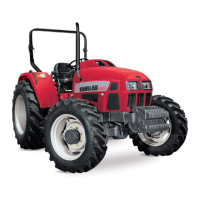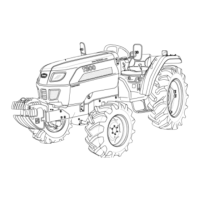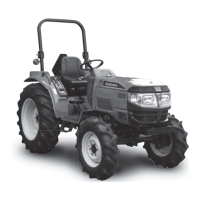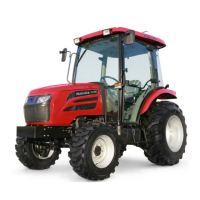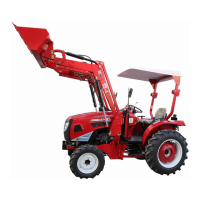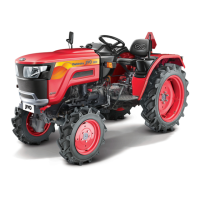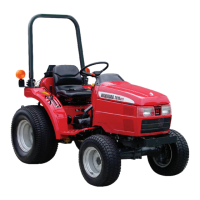■ Driving the tractor
1. Watch where you are going especially at row ends, on roads, around trees and low hanging
obstacles.
2. To avoid upsets, drive the tractor with care and at speeds compatible with safety, especially
when operating over rough ground, crossing ditches or slopes, and when turning at corners.
Lock the tractor brake pedals together when transporting on roads to provide proper wheel
.
braking.
4. Keep the tractor in the same gear when going downhill as used when going uphill. Do not coast
or free wheel down hills.
5. Any towed vehicle and/or trailer whose total weight exceeds that of the towing Tractor, must be
equipped with its own brakes for safe operation.
6. When the tractor is stuck or tires are frozen to the ground, back out to prevent upset.
7. Always check overhead clearance, especially when transporting the tractor.
■ Operating the PTO (Power Take Off)
1. When operating PTO driven equipment, shut off the engine and wait until the PTO stops before
getting off the tractor and disconnecting the equipment.
2. Do not wear loose clothing when operating the power take-off or near rotating equipment.
3. When operating stationery PTO driven equipment, always apply the tractor parking brake and
block the rear wheels from the front and rear side.
4. To avoid injury, always move down the flip part of PTO. Do not clean, adjust or service PTO
driven equipment when the tractor engine is running.
5. Make sure the PTO master shield is installed at all times and alwa
s re
lace the PTO shield ca
when the PTO is not in use.
■ NO Bio fuel.
1. Keep the equipment clean and properly maintained.
2. Under no circumstances should gasoline, alcohol or blended fuels be added to diesel fuel or explosive
hazard. Such blends are more explosive than pure gasoline. In aclosed container, such as a fuel tank. DO
NOT USE THESE BLENDS.
Never remove the fuel cap or refuel the tractor with the engine running
.
.
4. Do not smoke while refueling or when standing near fuel.
5. Maintain control of the fuel filler pipe when filling the tank.
6. Do not fill the fuel tank to capacity. Allow room for expansion.
7. Wipe up spilled fuel immediately.
8. Always tighten the fuel cap securely.
9. If the original fuel tank cap is lost, replace it with a genuine cap. A non approved cap may not be
safe.
10.Do not drive equipment near open fire.
28
.
ever use
ue
or c
ean
ng purposes.
12.Arrange fuel purchases so that winter grade fuel is are not held over and used in the spring.
N.B: It is suggested that after repairs if any of the Safety Decals/signs have been peeled off/defaced,
the same may be replaced immediately in the interest of your safety.

